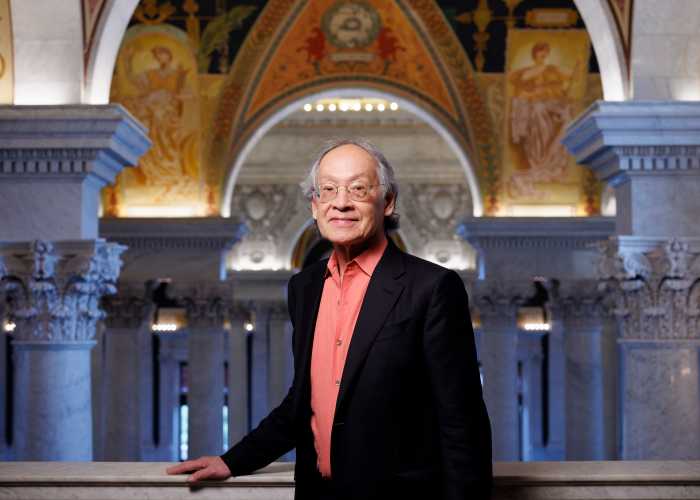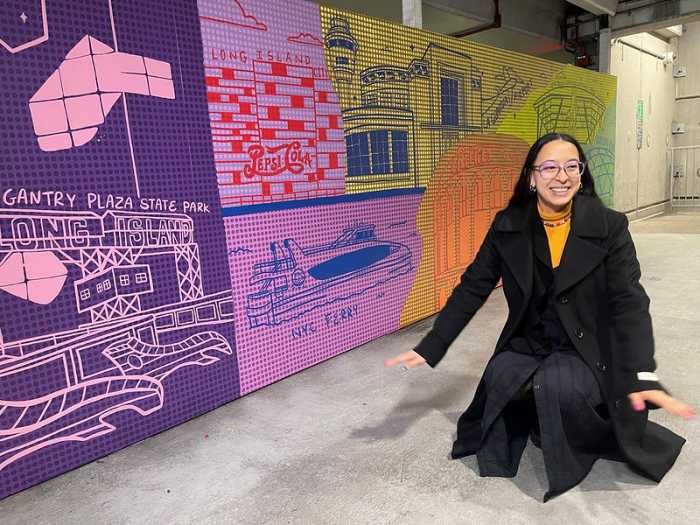The meaning of life is a puzzle many have devoted years to piecing together. Pondering the complexities of the universe, the origin of man and our purpose on the planet has perplexed even the world’s greatest thinkers. The best many can do is find some semblance of peace amidst the chaos and unnerving unknown.
Chie Shimizu molds together answers to life’s great questions part by part – or sculpture by sculpture. The 41 year old, originally from Yokohama, Japan, was introduced to art by her great uncle – a sculptor and Zen master. Visiting him as a child, she watched him work while discussing his opinions of the world – shaping her view on life in the process.
“I was always curious about where we came from, why we are here and who I am,” Shimizu said. My great uncle always told me unique stories. Most of the time, he would explain to me how he thought about the world. Even before I started talking to him, I had a curiosity about the meaning of life. People are born and die and we don’t know where they go. He would sort of reach that question through sculpture. I began visiting him and that was the time I started studying art.”
Despite frequently painting in her youth, Shimizu never felt satisfied representing her themes in two dimensions. When she began sculpting, her art came alive for her and allowed her to describe all aspects of her topics – thus forming a stronger connection with the audience.
Shimizu went on to attend the Tokyo University of Fine Art, studying traditional Japanese crafts and majoring in metal work. She came to New York in 1996 and enrolled in the New York Academy of Art.
Now living in Astoria and working out of her studio in LIC, Shimizu has followed in her uncle’s footsteps, becoming an artist whose work contains transcendent meanings that aid her in further grasping an understanding of the universe.
“I think all people ask questions about why they are here and alive,” she said. “I feel excited about making each new piece because I feel like I found something to describe about life. Every time I work on a new one it is a new way I’ve found to describe life, and after each sculpture, maybe I get a little bit closer to understanding life.”
Shimizu’s love of sculpture stems from her use of the art to transmit messages that would otherwise go undelivered. She feels her art allows her to express her emotions and opinions more clearly than she could with words. None of her pieces are titled, forcing the audience to approach the art without definitions dictating their thought.
“I think it is easier for me to explain in a sculpture then describe in words,” Shimizu said. “The images can give a different type of communication. What I describe in words is very definitive. But with an image, your imagination is more unlimited. When I confront nature or space, I feel it’s something I cannot describe in words. I may have a plan for my sculpture, but some viewers may have a different impression than what I had in the beginning. But that’s fine, because I’m aiming for something a lot of people can view a different way. It is reflective of each person.”
Her sculptures are typically very realistic figures – made of a mixture of Ultracal and plaster – and are light grey in color, which is created by painting the piece with a combination of seashell powder and an old fashioned adhesive. The color of the bodies was inspired by Butoh, a Japanese style of dancing in which the performer’s body is nearly naked and painted white.
In an attempt to allow her audience to relate to her subjects, Shimizu uses subtle techniques to make the figures appear very human. Fascinated with anatomy, she wanted her statues to have depth, similar to the layers of skin, tissue and blood present in the human body.
“I wanted to put layers so you could see how transparent the color is,” she said. “When you look at your skin, you can see many different colors. You can see veins, a reddish color or bluish color. There are many colors in the skin, so I wanted to give the same look.”
Her sculptures are also often decorated with an ornament. According to the artist, each figure’s position and ornament tells a different story, while also emphasizing the uniqueness of each existence. The decorations are frequently painted with gold or platinum leaf, symbolizing the beauty in life.
One sculpture depicting a figure holding an ornate ship above his head is representative of the journey each person takes during their lives. The ship, which Shimizu says is a metaphor for life, may endure rough waves and storms – as life can sometimes be a burden – but it is “still precious and a beautiful way to travel.”
“I do believe each person’s life is very interesting,” she said. “The life you live is very precious – even if it’s not always perfect. Some of my figures are in pain but carrying beautiful ornaments. Even with pain there is precious life there.”
Many of Shimizu’s creations draw their inspiration from Japanese folk tales and legends. A recent sculpture by the artist features a figure standing straight – a dark globe on top of its head and its face covered by a black sheet with a golden river painted on it.
Her inspiration for the sculpture was a Japanese story written over 1,000 years ago, telling the tale of a natural disaster that devastated the country.
“The author describes human life as very vulnerable and precious, like a bubble in the river. The water runs and the bubble comes up and goes away. That one second is a human’s life,” said the sculptor. “So I got an idea of making water run on the body. I made a cloth sculpture and I painted a river or water pattern to describe this feeling. The globe on top represents the Earth. This is the nature we live with, so I put it on top of the head because it is something we always have to live with. We can’t control it, like a natural disaster.”
Another of her pieces – a young man sitting with his legs folded, deep in thought and with a traditional Japanese mask covering his face – references a tale of an adolescent who is mentored by a wise elderly man and symbolizes the importance of experience guiding youth. The mask worn by the statue is used in Japan during performances of the story.
Although she has been sculpting for over a decade, Shimizu doubts she will cease her work anytime soon. The more days that pass, the more life questions she finds herself pondering – some impossible to answer.
“Some questions we cannot find out. They are ultimate and extreme questions,” she said. “There are answers but they may not be meant to be found. I still have big questions. Maybe that’s why I keep doing it.”
Shimizu is a featured sculptor in this month’s LIC Arts Open festival. Her art will be on display on May 19 and 20 at her studio, located at 43-01 21st Street in LIC.
More of Shimizu’s work can be viewed on her website, www.chieshimizu.com.





































